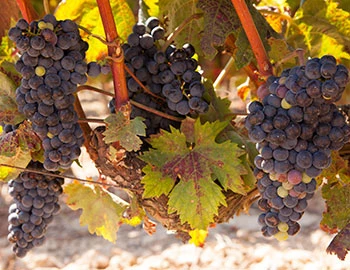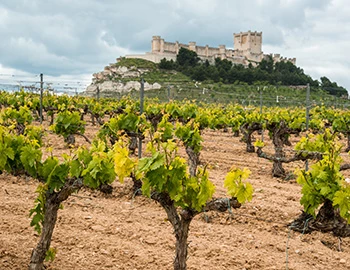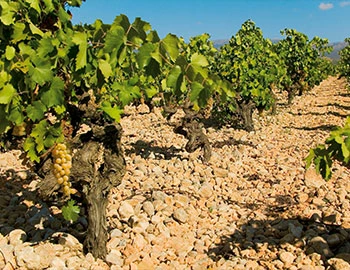Galia Le Dean 2020
VdT Castilla y León, Galia by Bodega El Regajal, 750 ml

| Grape variety: | Tempranillo |
| Producer: | Bodega El Regajal |
| Origin: | Spain / Castilla y León |
Description
Galia - which sounds Italian, looks French, but is actually a proud Spaniard: the personal project of French oenologist Jerome Bougnaud, who works for Pingus, among others. Le Dean comes from two exclusive vineyards with calcareous soils in Ribera del Duero. An old vineyard planted in 1920 in Quintanilla de Onésimo (Valladolid), near Vega Sicilia, with Tempranillo and Albillo on a north-facing slope, and Hontangas (Burgos), an old vineyard with Tempranillo on a northeast- facing slope that favours slow and fresh ripening. Le Dean expresses the chalky minerality of the old vineyards on the river Duero. The bouquet is opulent and multilayered, reminiscent of blackberries, black cherries, Damask roses, a little black pepper and graphite. On the palate, this elegant, juicy and warming Spaniard shows good structure and a tight, velvety tannin. Dark berry again, interwoven with Mediterranean and balsamic flavours.
Attributes
| Origin: | Spain / Castilla y León |
| Grape variety: | Tempranillo |
| Label: | Vegan |
| Ripening potential: | 3 to 12 years |
| Drinking temperature: | 16 to 18 °C |
| Food Pairing: | Moroccan specialities, Spiced grillades, Saddle of lamb fillet with herb jus, Wild specialities |
| Vinification: | fully destemmed, fermentation of entire grape |
| Harvest: | hand-picking, in small boxes |
| Maturation: | in partly new and used barriques/ Pièces, partly in wooden barrel/foudre |
| Maturation duration: | 21 months |
| Volume: | 15.0 % |
| Note: | Contains sulphites |
Bodega El Regajal
The unique El Regajal estate with its modern bodega is located to the south of the province of Madrid, in Aranjuez, and was founded by the García-Pita family in 1998. In addition to the Madrid winery, a project called “Galia” was launched in collaboration with Jérôme Bougnaud.
Oenologist Jérôme Bougnaud comes from a family of winemakers in the Cognac region of France. He is responsible for winegrowing at El Regajal, where he cultivates the vineyards according to biodynamic principles out of conviction. The joint project “Galia” marks the realisation of a long-held dream.

Tempranillo
Iberian Native
The Tempranillo is the emblem of Spain. With its juicy cherry fruit, crisp tannins, and its notes of leather and spices, it gives the Rioja its face. In the Ribera del Duero, it is known as Tinta del país. Here it turns out focused and muscular. As it has inhabited the Iberian Peninsula for centuries, it is known under countless synonyms. Across the border in Portugal, it is called Tinta Roriz, and lends colour and body to port wine. It also plays an important role in the booming wine scene of the Douro Valley. The Tempranillo owes its name to its early maturity – "temprano" in Spanish means "early". Tip: do it like they do in Spain and enjoy it with lamb.

Castilla y León
Castile and León: Increasing diversity
Only 30 years ago, the autonomous region of Castile and León was an almost blank spot on the European wine list. This has changed immensely thanks to three grape varieties. The Tempranillo variety yields feisty, strong wines in Ribera del Duero and Toro. And Bierzo, the small wine area in the region's northwest, has experienced an impressive ascent, thanks to the character-laden Mencia variety. Finally, the fresh and fruity Verdelho pressings from Rueda have become the most successful Spanish white wines.

Spain
Spain – Variety and perfection
“Somewhere in la Mancha, in a place whose name I do not care to remember...,” begins Don Quixote's odyssey.
The most famous part is definitely when Don Quixote thinks windmills are his enemy and wants to fight them – until they nearly kill him. It’s possible there was a bit too much of the La Mancha wine at play. Spanish vines fight for their survival in rugged landscapes, battling fierce drought and rough soils. But they fight well.



